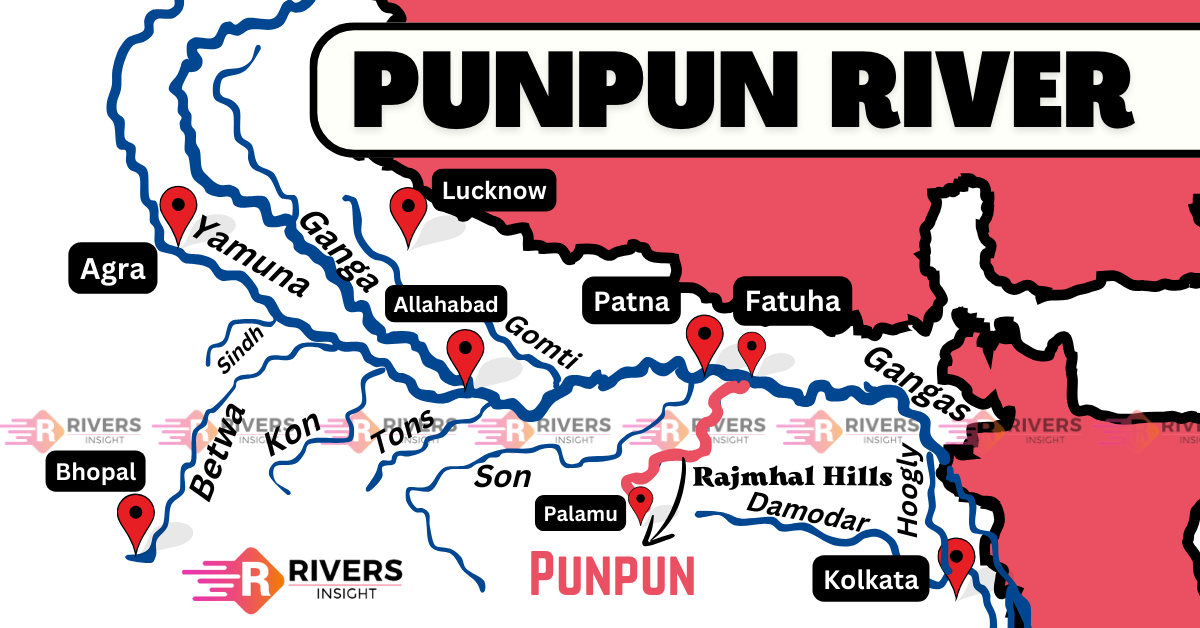Punpun River of Bihar: Map & Origin
The Punpun River is a minor yet culturally significant tributary of the Ganga River, flowing through eastern India in the states of Jharkhand and Bihar. It holds historical and religious importance, especially for Hindu rituals. Additionally, the river is being studied for inland waterway navigation, which could enhance irrigation and transportation in the region.
Table of Contents
Origin and Course
The Punpun River originates in the Palamu district of Jharkhand. It flows through Chatra, Aurangabad, Gaya, and Patna districts, primarily in a northeast direction. Eventually, it merges with the Ganga River at Fatuha, near Patna.
The total course of the river under study for waterway development is 34.61 km from its confluence with the Ganga to an upstream location near Dudhaila on NH83.
Survey and Inland Waterway Feasibility
The Inland Waterways Authority of India (IWAI) has commissioned a detailed hydrographic and feasibility survey of the Punpun River. The study aims to assess:
- River navigation potential
- River training works and development costs
- Possibilities for eco-friendly transport
This initiative could improve irrigation projects and waterway transportation, boosting economic opportunities and living standards for people in the surrounding areas.
Cultural and Religious Significance
The Punpun River holds deep religious importance in Hinduism. It is believed that Mata Sita spent time near Punpun village, making it a revered site.
Additionally, Punpun and Gaya are among the most important places for Pind-Daan (ancestral offerings). Hindu devotees, including those from Nepal and across India, visit the riverbanks every year to perform these sacred rituals. It is said that Pind-Daan must first be done in Punpun, before continuing in Gaya.
Conclusion
The Punpun River is not just a tributary of the Ganga but also a lifeline for local communities. Its hydrographic survey and waterway feasibility study could lead to future development, while its religious significance continues to attract devotees. With growing attention to its potential, the river holds promise for both economic and spiritual enrichment in the region.




